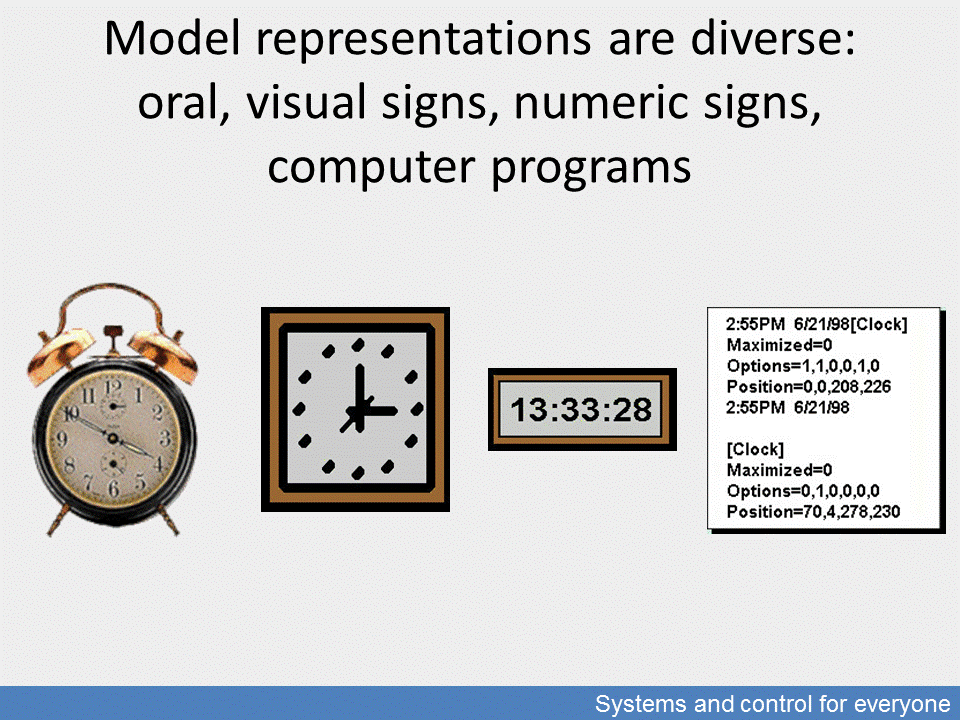

The system and its model
When selecting the type of the model, that is when deciding whether the purpose of our model is simulation or control, we have to consider the following:
- key characteristics relevant to our goal;
- applicable modelling procedures;
- available information;
- manner and costs of potential implementation.
If our purpose is simulation, the aim is to reproduce the behaviour of the system as accurately as possible. Complexity in this case is only limited by runtime requirements. If the purpose is control, only those system characteristics are relevant that have an influence on this purpose. Complexity in this case is only limited by the capabilities of available control design procedures.
The nature of the model depends on the methods and tools used for the modelling. In this context, the starting points of modelling are the sources of information about the actual physical system, i.e. the theoretical and practical knowledge, and assumptions. Theoretical knowledge includes descriptions provided by theories about certain (physical, chemical etc.) phenomena, which usually take the form of (common or partial) differential equations. Practical knowledge is the totality of information collected about the system through observation and measurements, and knowledge about the measured values of specific parameters in the theoretical models. Assumptions include opinions about the reliability and validity of the applied model.
Modelling needs abstraction. The system is examined from specific aspects, while other aspects are ignored. Modelling means gaining deep understanding of the nature and operation of a system, and putting this knowledge into mathematical forms. When examining the dynamic behaviour of the system and controlling the system, the important thing is the transfer of signals that is how the output signals of the system reflect to the input signals. Other properties, which are important from other points of view, are disregarded now. The transfer of signals is usually described by mathematical equations, more specifically differential equations or difference equations. Naturally, when implementing the system other aspects also gain importance, such as the selection and realisation of system components, the size and price of equipment, environmental considerations etc.
The mathematical model describing the signal transfer characteristics can be depicted as a box, where the arrow pointing at the box denotes the input signal, and the arrow pointing away from the box the output signal. The mathematical relation characterising the signal transfer is written in the box.